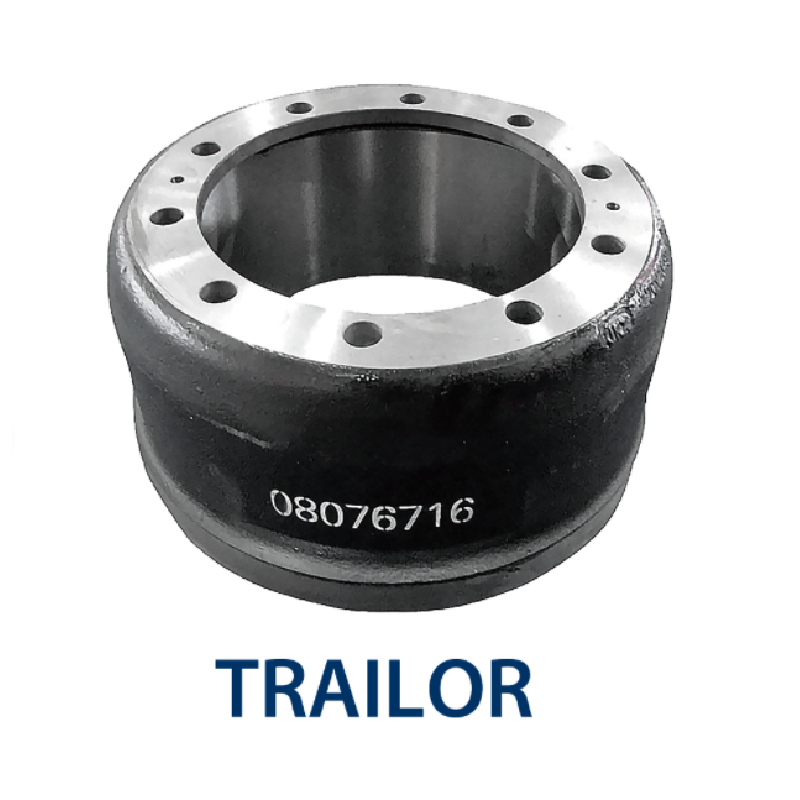Nov . 14, 2024 02:30 Back to list
brake drum specification guide
Understanding Brake Drum Specifications A Comprehensive Guide
Brake drums play a crucial role in the braking systems of vehicles, especially for heavier vehicles such as trucks and buses. Understanding the specifications of brake drums is essential for ensuring optimal performance, safety, and longevity of the braking system. This guide delves into the vital aspects of brake drum specifications, helping both consumers and automotive professionals make informed decisions.
What is a Brake Drum?
A brake drum is a component of the drum brake system in vehicles. It is cylindrical and rotates with the wheel, playing a key part in slowing or stopping the vehicle. When the brake pedal is pressed, brake shoes inside the drum are forced outward against the drum's inner surface. The friction created between the shoes and the drum slows down the wheel, thereby reducing the vehicle’s speed.
Key Specifications
When considering brake drums, several specifications need to be evaluated
1. Diameter The diameter of the brake drum is directly related to its performance. A larger diameter can provide better braking power but may require more torque from the wheel hub. Common diameters range from 10 to 16 inches, depending on the vehicle type.
2. Width The width of the brake drum, typically measured in inches, affects the contact area between the shoes and the drum. A wider drum can improve braking efficiency, especially under heavy loads.
3. Material Common materials used in brake drum manufacturing include cast iron and aluminum. Cast iron drums are durable and heat resistant, making them suitable for heavy-duty applications. Aluminum drums, being lighter, enhance performance in lighter vehicles.
brake drum specification guide

4. Construction Type Brake drums can be either solid or vented. Vented drums have internal fins that help dissipate heat, which is particularly beneficial in high-performance situations or when frequently braking from high speeds.
5. Thickness The minimum thickness of the drum is vital for safety. Drums should not be machined below the specified minimum thickness, as this can lead to reduced braking performance and potential failure. Regular inspections for wear are essential.
Why Specifications Matter
Understanding these specifications is crucial for various reasons
- Safety Incorrect brake drum specifications can lead to brake failure, endangering the driver and other road users. Ensuring the right fit and quality can mitigate such risks.
- Performance The right specification guarantees optimal performance of the braking system. A well-matched brake drum can provide smoother brakes and enhance overall driving experience.
- Durability Selecting brake drums that meet or exceed OEM specifications ensures longevity. High-quality materials withstand wear better and require less frequent replacements, saving time and money in the long run.
Conclusion
In conclusion, comprehending brake drum specifications is essential for vehicle safety and performance. By paying attention to diameter, width, material, construction type, and thickness, automotive technicians and vehicle owners can ensure that their braking systems function efficiently and effectively. Regular maintenance and inspections, coupled with the right specifications, will lead to safer driving experiences on the road. Whether you are upgrading your vehicle’s braking system or replacing worn-out components, make informed choices to ensure optimal performance and reliability.
-
Scania Brake Drums: OEM Quality for Optimal Safety & Durability
NewsAug.16,2025
-
R.V.I: Advanced Remote Visual Inspection for Precision
NewsAug.15,2025
-
Discover HYUNDA: Innovative Vehicles, Equipment & Solutions
NewsAug.14,2025
-
R.V.I: Unlock Advanced Insights & Real-time Performance
NewsAug.13,2025
-
Kamaz Brake Drum: Durable & Reliable for Heavy Duty Trucks
NewsAug.12,2025
-
Heavy Duty Iveco Brake Drum - Premium Quality & Safety
NewsAug.11,2025
